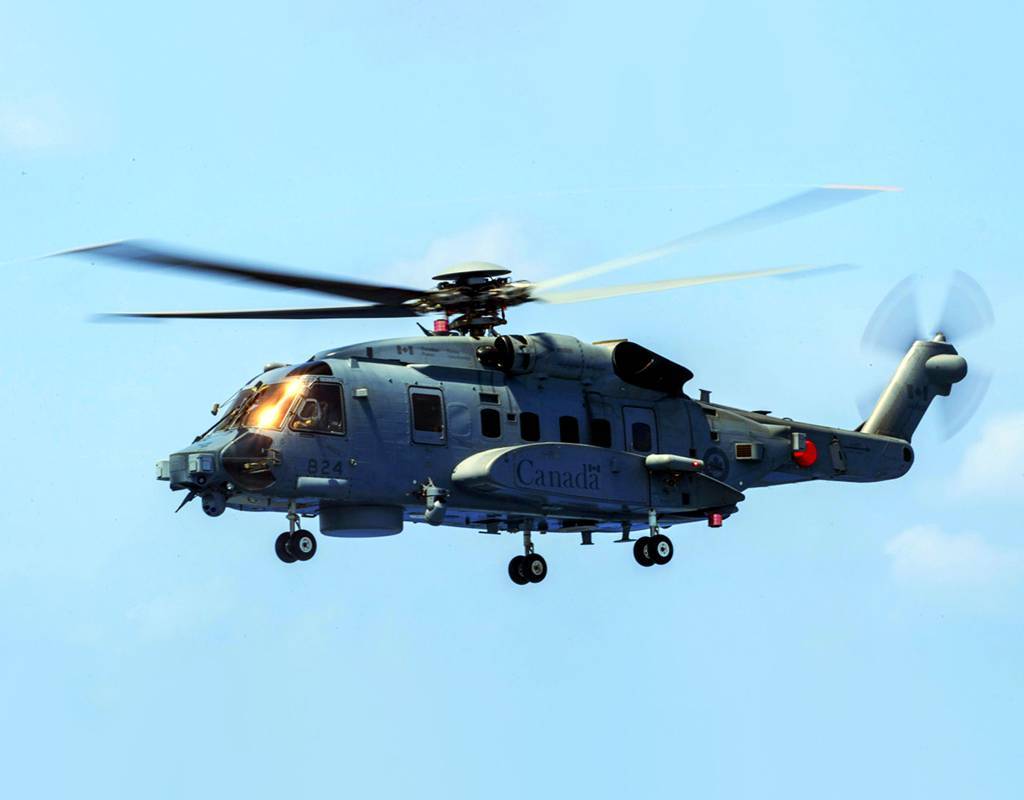
The Royal Canadian Air Force (RCAF) formally announced that the operational pause on its fleet of CH-148 Cyclone helicopters has been lifted effective immediately, following the initial stages of the crash investigation into the April 29 accident that claimed six lives.
Advertisement
In a June 16 media briefing, RCAF leaders outlined current crash investigation findings and said they are confident in the Cyclone’s ability to resume operations — but only after aircrews undergo training to avoid a similar future occurrence.
Officials told reporters that upon return to HMCS Fredericton in the Ionian Sea, Stalker 22 — the CH-148 Cyclone that crashed — didn’t respond to pilot input as anticipated. The aircraft’s flight director was set to hold a specific altitude and airspeed, which conflicted with the pilot’s inputs as he was turning to align with the ship.
“The flight control inputs given by the flying pilot were not producing a corresponding reaction to the pitch attitude of the aircraft,” said Col John Alexander, director of Flight Safety and DND’s Airworthiness Investigative Authority.
The software issue, in addition to the helicopter’s low altitude, meant that the pilot was unable to respond to the situation in time to prevent the crash.
After uncovering initial data from the flight recording system, investigators were able to recreate the crash in a simulated environment. This led the investigative team to confirm the anomaly had occurred under a “very specific and narrow set of circumstances.”
Due to the rarity of the event, the crew “would have had no previous exposure or experience on how to handle the situation,” according to LGen Alain Pelletier, commander of 1 Canadian Air Division and the Operational Airworthiness Authority.
Alexander said that due to information gathered so far, the RCAF has been able to “exclude mechanical failure” as a factor. The investigative team will be looking into “human factors and the logic inside the actual software.”
With all that is now known about the incident, the RCAF said it is confident in the Cyclone’s ability to fly again safely.
“This decision was not taken lightly,” Pelletier remarked. “The resumption of flying activity is the result of a detailed analysis and risk assessment based on the known conditions that led to the accident.”
Before aircrews can begin flying the Cyclone again, they will undergo one round of simulation training that will teach them how to recognize and respond to this anomaly safely. Aircraft manuals and documents have also been updated accordingly. The RCAF consulted with Sikorsky, the CH-148’s manufacturer, in order to adequately prepare the training program.
“With the ground training that is being initiated today both at [12 Wing] Shearwater and [RCAF Station] Pat[ricia] Bay with the two operational squadrons and the training squadron, which will be followed by the simulator over the next few days … we anticipate that the aircraft could be flying as early as the end of the week,” said Pelletier. “However, there’s no pressure, it’s an element that I’ve delegated to the Wing commander at 12 Wing for him to assess the rate at which the training will take place.”
Advertisement
Following simulator and ground training, the RCAF believes pilots will have enough knowledge of the system to fly safely.
According to Pelletier, after isolating the problems that led to Stalker 22’s crash, the RCAF was able to identify a component in the Cyclone that would mitigate the issue in order to “enable the safe resumption of flying activity.”
“We’re confident in the simulation training that we’re going to provide the aircrew that will enable them to learn about the switch that will disable one level of that automation layer, which will allow them to set a recovery path,” Pelletier explained.
Throughout the briefing, officials were adamant that the factors behind Stalker 22’s crash had no relation to any of the helicopter’s previous incidents with the Air Force — including the “hard landing” of a Cyclone aboard MV Asterix in 2019.
As for the rest of the investigation, Alexander said they expect it will take several months to fully understand the “why” factor behind the autopilot’s conflicting inputs that led to the April 29 crash.



